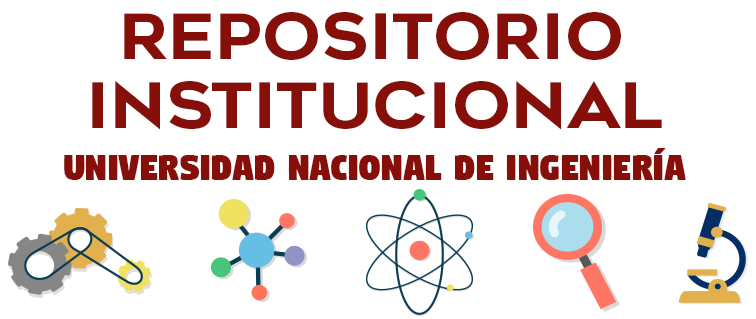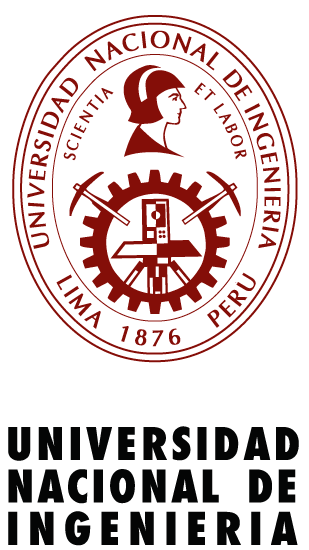Por favor, use este identificador para citar o enlazar este ítem:
http://hdl.handle.net/20.500.14076/26913| Título : | Propuesta de una ecuación de correlación lineal entre los índices de los métodos empiricos Qslope y SMR |
| Autor : | Umpire Portocarrero, Jorge Antonio |
| Asesor : | Trejo Noreña, Pablo César |
| Palabras clave : | Ecuación de correlación lineal;QSLOPE |
| Fecha de publicación : | 2023 |
| Editorial : | Universidad Nacional de Ingeniería |
| Resumen : | En proyectos de obras civiles y mineros es frecuente la evaluación de la estabilidad de cortes y bancos en taludes del macizo rocoso mediante los índices geomecánicos SMR y Qslope ya que es muy difícil evaluar con métodos analíticos y numéricos en tiempo real. Algunos autores encontraron correlaciones entre estos índices geomecánicos aplicados en diferentes litologías y entornos geológicos. Sin embargo, las propuestas de correlación entre estos dos índices expresan una relación numérica, mas no expresan una adecuada correlación entre las predicciones del comportamiento del talud. Maion (2019) expuso en su tesis “Propuesta de correlación entre los índices SMR y Qslope “la correlación entre los índices Qslope y SMR, y propuso un índice que es la razón entre el Qslope y el ángulo del talud que representa mejor el comportamiento predictivo del talud; además propone una correlación entre este índice y el SMR. Se establece de forma similar la metodología seguida por Maion (2019) para la obtención de las correlaciones. La investigación que se ha desarrollado es de tipo exploratorio predictivo realizado a 163 macizos rocosos con diferente tipo de litología y configuración estructural recopilados de proyectos de ingeniería en su mayoría vial. Se obtuvieron los parámetros de entrada de los índices Qslope y SMR del RMR y del análisis cinemático con el Software DIPS. Para el cálculo del índice SMR se usó la hoja de cálculo SMRTool, y para el cálculo del índice Qslope se obtuvieron sus parámetros geomecánicos de la hoja de evaluación RMR y del análisis cinemático. Se propone hallar nuevos límites de estabilidad comparativos a la propuesta de Nick Barton con el algoritmo Máquina de soporte vectorial (SVM) donde el resultado final es el ángulo óptimo de corte como nueva propuesta. Se realiza el análisis de regresión entre el índice Qslope y SMR obteniéndose una ecuación lineal; y una propuesta ecuación de correlación entre el índice de estabilidad y el SMR donde el índice de estabilidad es la razón entre el ángulo optimo sobre el ángulo actual del talud. Para el mejoramiento del coeficiente de determinación de la ecuación de correlación entre el índice de estabilidad y el SMR se aplicó el algoritmo DBSCAN que agrupa las zonas de mayor densidad llamados clúster e identifica los puntos que no tiene grupo llamado ruido. Se obtuvo la propuesta de una ecuación de correlación lineal entre los índices de los métodos empíricos Qslope y SMR, siendo dos correlaciones lineales obtenidas entre el índice de estabilidad propuesto por Maion y el valor índice SMR; y el nuevo índice de estabilidad propuesto obtenido del algoritmo Máquina de soporte vectorial (SVM) y el valor índice SMR. Se concluye que la ecuación de correlación lineal obtenida entre el índice de estabilidad y el SMR es representativa y aplicable para la evaluación de la estabilidad y propuesta de la inclinación del corte como valor preliminar. In civil works and mining projects, it is common to evaluate the stability of cuts and banks in rock mass slopes using the SMR and Qslope geomechanical indices, since it is very difficult to evaluate with analytical and numerical methods in real time. Some authors found correlations between these geomechanical indices applied in different lithologies and geological environments. However, the correlation proposals between these two indices express a numerical relationship, but they do not express an adequate correlation between the slope behavior predictions. Maion (2019) exposed in his thesis "Correlation proposal between the SMR and Qslope indices'' the correlation between the Qslope and SMR indices, and proposed an index that is the ratio between the Qslope and the slope angle that best represents the predictive behavior of the slope; it also proposes a correlation between this index and the SMR. The methodology followed by Maion (2019) to obtain the correlations is established in a similar way. The research that has been developed is of a predictive exploratory type carried out on 163 rock masses with different types of lithology and structural configuration compiled from engineering projects, mostly roads. The input parameters of the Qslope and SMR indices were obtained from the RMR and from the kinematic analysis with the DIPS Software. For the calculation of the SMR index, the SMRTool spreadsheet was used, and for the calculation of the Qslope index, its geomechanical parameters were obtained from the RMR evaluation sheet and from the kinematic analysis. It is proposed to find new comparative stability limits to Nick Barton's proposal with the Support Vector Machine (SVM) algorithm where the final result is the optimal cutting angle as a new proposal. The regression analysis between the Qslope index and SMR is performed, obtaining a linear equation; and a proposed correlation equation between the stability index and the SMR where the stability index is the ratio of the optimum angle to the current angle of the slope. To improve the determination coefficient of the correlation equation between the stability index and the SMR, the DBSCAN algorithm was applied, which groups the areas of higher density called clusters and identifies the points that do not have a group called noise. The proposal of a linear correlation equation between the indices of the empirical methods Qslope and SMR was obtained, being two linear correlations obtained between the stability index proposed by Maion and the SMR index value; and the new proposed stability index obtained from the Support Vector Machine (SVM) algorithm and the SMR index value. It is concluded that the linear correlation equation obtained between the stability index and the SMR is representative and applicable for the evaluation of the stability and proposal of the slope of the cut as a preliminary value. |
| URI : | http://hdl.handle.net/20.500.14076/26913 |
| Derechos: | info:eu-repo/semantics/restrictedAccess |
| Aparece en las colecciones: | Maestría |
Ficheros en este ítem:
| Fichero | Descripción | Tamaño | Formato | |
|---|---|---|---|---|
| umpire_pj.pdf | 4,58 MB | Adobe PDF | Acceso Restringido | |
| informe_de_similitud.pdf | 2,57 MB | Adobe PDF | Visualizar/Abrir | |
| umpire_pj(acta).pdf | 1,63 MB | Adobe PDF | Visualizar/Abrir |
Este ítem está sujeto a una licencia Creative Commons Licencia Creative Commons

Indexado por:



